Conversations – Essential Skills for Effective Leadership
MIT Gordon Engineering Leadership Program – June 2016
Tom Malone, CEO of Milliken, a leading textile manufacturer, once invited Analog Devices’ senior leadership team to visit and learn how they had won the Baldrige Award for quality. In his closing remarks, Tom made an observation which has always stuck in Ray’s mind.
Ray Stata on the evolution of the semiconductor industry
McKinsey & Company – Abhijit Mahindroo and Nick Santhanam – March 9, 2016
The cofounder of Analog Devices looks back on his long career and assesses the state of semiconductors today.
The History of Converter Products
An Interview by David Mindell for the Computer Museum, 2012
A discussion of the origins and evolution of converter products – analog-to- digital and digital-to- analog – and the role which Analog Devices played in the growth and development of this category of semiconductor products.
Ray Stata's Commencement address at MIT in 2010
The spirit of innovation and entrepreneurship applies not just to business, engineering and science, but to every aspect of work and life.
MIT 150 Infinite History Interview
Ray Stata interviewed by Toby Smith, 2009
In an interview celebrating MIT’s 150th anniversary, Ray reflects on his experience at MIT, both as a student and then later in life, the impact which MIT had on his life and career, and how MIT has evolved over the decades when he was involved. He also talks about entrepreneurship and how his company, Analog Devices, got started and developed over many decades. He describes how the Stata Center came into being, how the quality of student life has improved and his aspirations for MIT in the future.
What Leaders Really Do
John P. Kotter, Harvard Business Review, December 2001
John Kotter’s work deepened and extended insights into the distinction between management and leadership. He advocated they were complementary systems of action, both necessary for success, but that most companies were over managed and under led. Good management is about coping with complexity and bringing about a degree of order and consistency. Leadership is about coping with change in a dynamic environment.
Creating a Competitive Strategic Advantage
Dr. Russell L. Ackoff, Journal of Innovation Management, Winter 2000/2001
Through the lens of systems thinking, Russell Ackoff, the foremost pioneer in this field, explains five kinds of changes that will create strategic advantage in a more competitive world. He first lays out systems thinking concepts and then through numerous examples reveals the extraordinary wisdom he accumulated over a lifetime of studying how to improve the performance of organizations.
Building a High Performance Organization
MIT Enterprise Forum, November 2nd, 1996
Ray shared with the Forum some of his experience in building a high-performance organization. He emphasized employee satisfaction as the key driver of business success. If you have talented, motivated, happy employees and great leaders, the rest will take care of itself. He outlines ways to achieve employee satisfaction and to develop leadership skills. Purpose and values play a major role in creating a culture and environment where people come and stay and do great things.
The Human Side of New Enterprise
MIT Enterprise Forum, May 20th, 1999
In starting new companies, we mostly think about creating new products and technologies that address unmet market needs. But we must also be explicit in thinking about the human side of enterprise and about creating a culture and environment that achieves employee satisfaction and motivates ambition and productive behavior. At Analog Devices we adopted the Theory Y style of management that takes a positive view of human nature, believing that people want to do the best job possible and develop to their full potential. Our goal was to develop trustful relationships through openness, honesty and integrity and by a commitment to employee well-being and their personal success. We stressed conversation competence as a skill to improve the quality of relationships and effective coordination of work.
Organizational Learning: The Key to Success in the 1990s
Ray Stata, Prism, Fourth Quarter 1992
The rising standards in the rapidly changing technology and world markets are driving a paradigm shift with regard to performance improvement. TQM highlights four levels of learning – individual, team, organizational and societal. Beyond TQM there is a need to transform managers into leaders who have the knowledge and skills to manage change. It is often necessary for leadership to discard old assumptions and beliefs that have become impediments to progress and growth.
Organizational Learning – The Key to Management Innovation
Ray Stata, MIT Sloan Management Review, April 15, 1989
When we think of innovation it is mostly about product and process innovation. Japanese companies have demonstrated that management innovation can have even more impact on performance. This article points out that the rate of organizational learning is a key factor in management innovation. Approaches to accelerate the rate of organizational learning are drawn from experiences at Analog Devices and other companies that participated in MIT’s New Management Style Project.
The Innovators: Rediscovering America's Creative Energy
A Book by James Botkin, Dan Dimancescu and Ray Stata, 1984
The Innovators focuses on the principles and practices that drive successful innovation within organizations. Drawing on his extensive experience as a co-founder of Analog Devices, Stata provides insights into the critical factors that contribute to a company’s ability to innovate and sustain growth over time.
Global stakes: The future of high technology in America
A Book by James W Botkin, Dan Dimancescu and Ray Stata, 1982
Global Stakes explores the competitive challenges faced by the United States in maintaining its leadership in the global high-tech industry. Drawing from his experience as a co-founder of Analog Devices, Stata offers insights into how the U.S. can secure its technological future.
